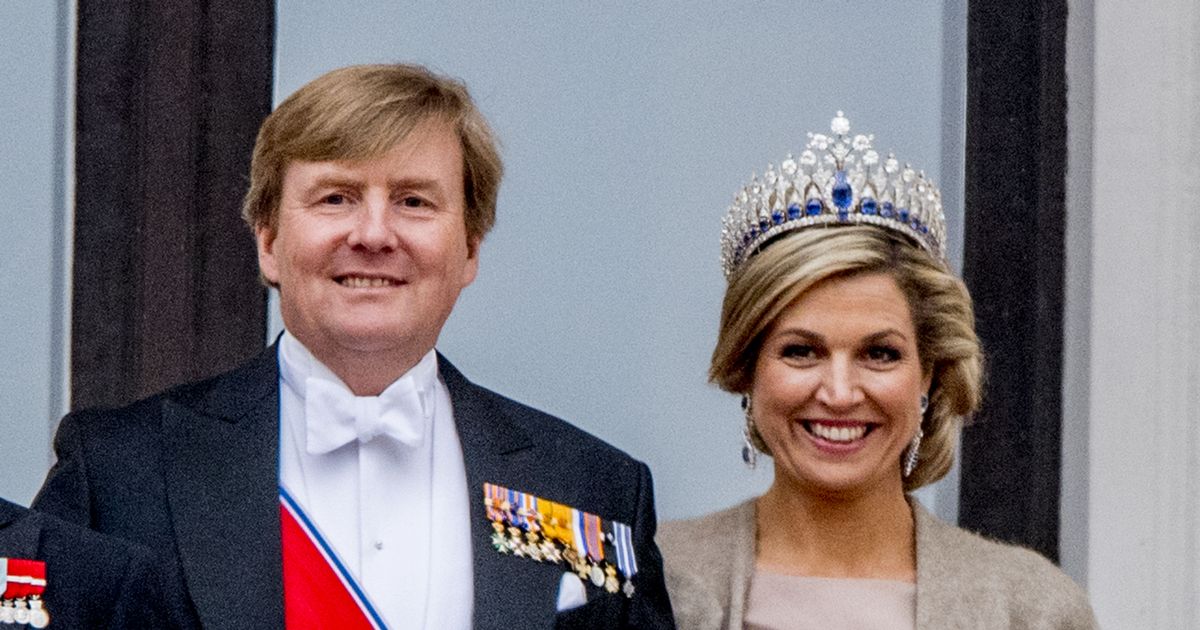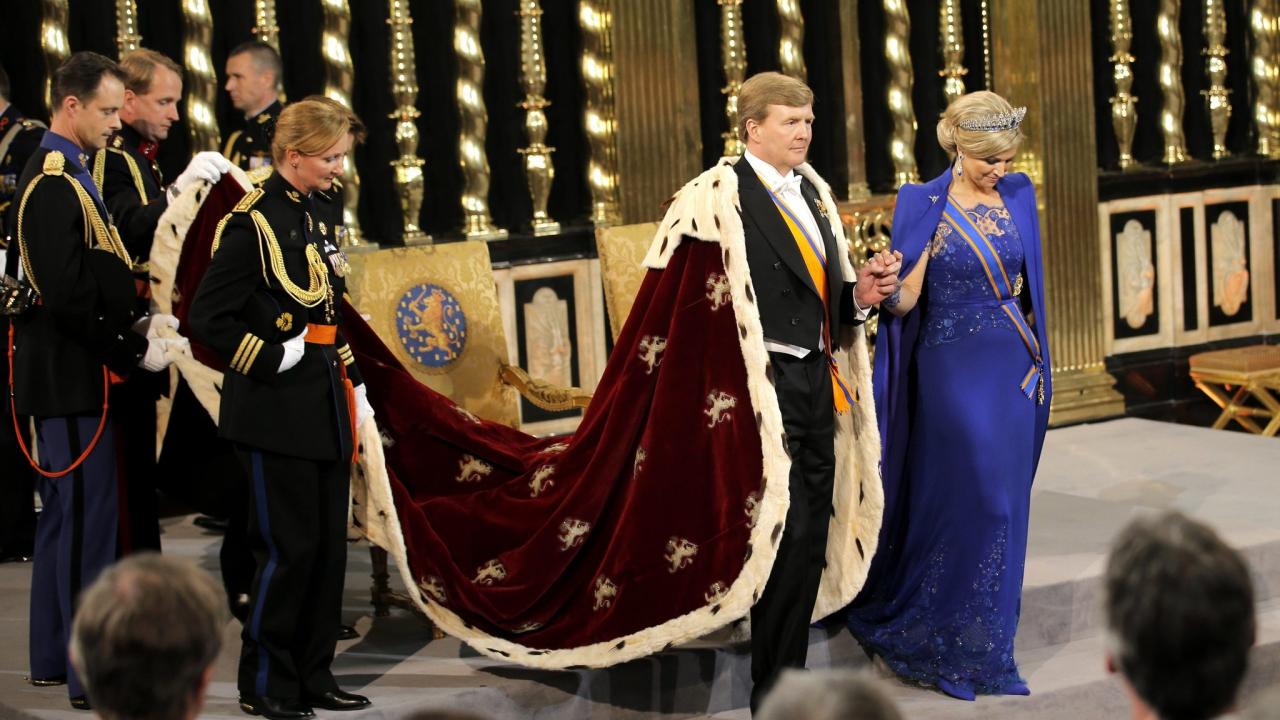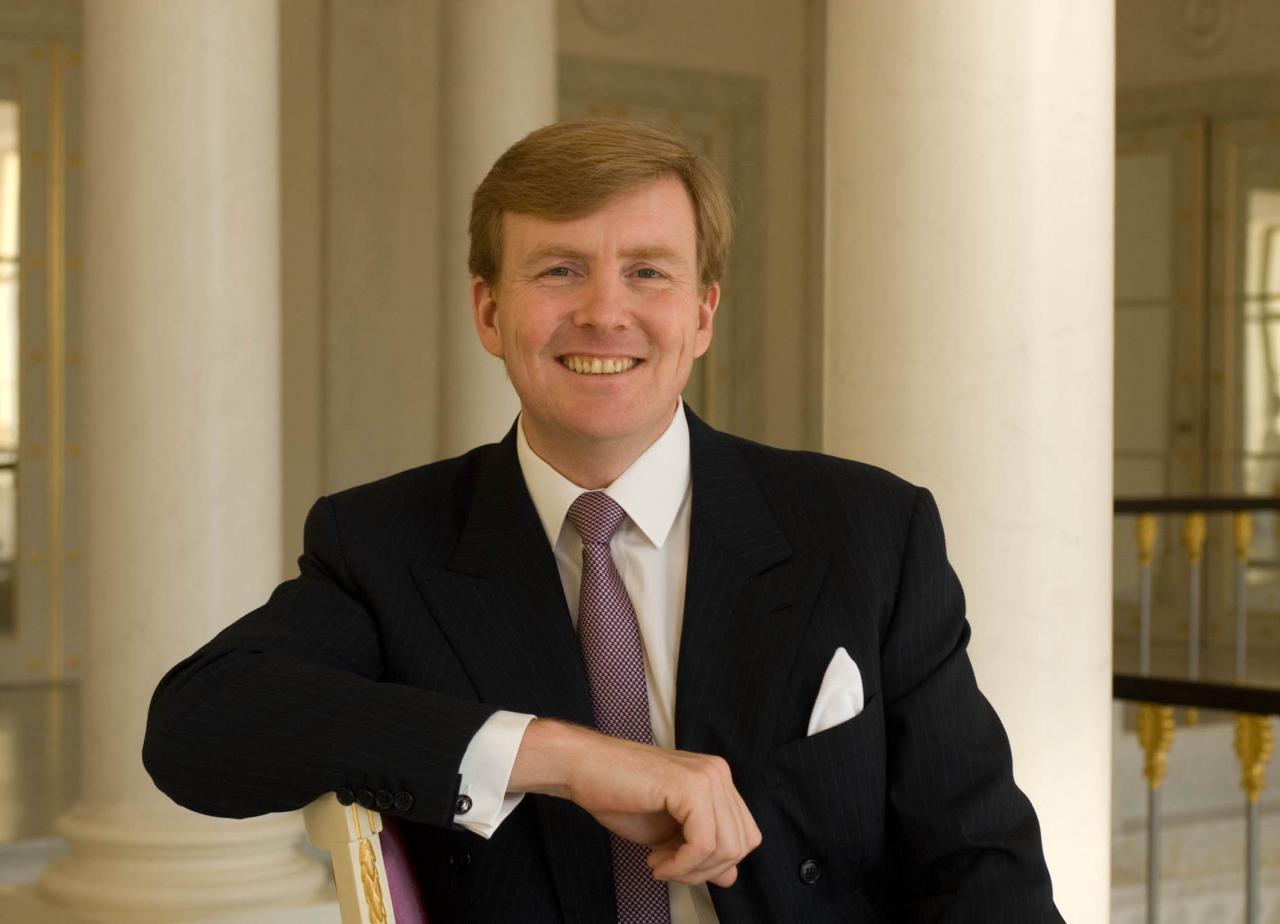
King of netherlands – King Willem-Alexander of the Netherlands stands as a symbol of national unity and continuity, embodying the rich history and traditions of the Dutch monarchy. His role extends beyond the ceremonial, as he actively engages in Dutch society and international affairs, shaping the future of the monarchy in the 21st century.
The Dutch monarchy has a long and storied past, dating back to the 16th century. The current constitutional monarchy was established in 1815, and the House of Orange-Nassau has reigned ever since. King Willem-Alexander ascended to the throne in 2013, following the abdication of his mother, Queen Beatrix.
Monarch of the Netherlands
The King of the Netherlands is the head of state and the symbol of national unity. The official title of the monarch is “His Majesty the King of the Netherlands, Prince of Orange-Nassau.” The monarch’s responsibilities include:
- Representing the Netherlands at home and abroad
- Opening and closing parliamentary sessions
- Sanctioning laws
- Appointing ministers and other government officials
- Granting pardons
- Commanding the armed forces
The constitutional role of the monarch is largely ceremonial, but the monarch still has some political powers. For example, the monarch can refuse to sign a law into effect, although this power has rarely been used.The monarchy in the Netherlands has a long history.
The first King of the Netherlands was William I, who was crowned in 1815. The current monarch is King Willem-Alexander, who ascended to the throne in 2013.
Willem-Alexander, the Current King
King Willem-Alexander was born in Utrecht, Netherlands, on April 27, He is the eldest son of Queen Beatrix and Prince Claus. He studied history at Leiden University and received a master’s degree in international relations from Oxford University. He married Máxima Zorreguieta Cerruti in 2002, and they have three daughters: Catharina-Amalia, Alexia, and Ariane.King
Willem-Alexander is a popular figure in the Netherlands. He is known for his friendly and approachable demeanor. He is also a strong advocate for environmental protection and social justice.
The Dutch Royal Family
The Dutch royal family consists of the King, Queen, and their three daughters. The King’s mother, Queen Beatrix, is the former monarch. The King’s father, Prince Claus, passed away in
2002. The line of succession to the Dutch throne is as follows
- Catharina-Amalia, Princess of Orange
- Alexia, Princess of the Netherlands
- Ariane, Princess of the Netherlands
Royal Palaces and Residences

The Dutch royal family has several official palaces and residences. The main palace is the Royal Palace of Amsterdam, which is located in the center of the city. Other royal palaces include the Noordeinde Palace in The Hague, the Palace ‘t Loo in Apeldoorn, and the Huis ten Bosch Palace in The Hague.The
royal palaces are used for a variety of purposes, including state functions, official receptions, and private family events. The palaces are also open to the public for tours.
Royal Traditions and Ceremonies
The Dutch monarchy has a number of traditional ceremonies and events. One of the most important ceremonies is the Prinsjesdag, which is held on the third Tuesday of September. During the Prinsjesdag, the King delivers the Speech from the Throne to the Parliament of the Netherlands.Other
royal ceremonies include the Investiture of the Knights of the Order of the Netherlands Lion, the Royal Wedding, and the Royal Funeral.
The King’s Relationship with the People
The King is a symbol of national unity and is highly respected by the Dutch people. He is seen as a father figure and a role model. The King is also a popular figure in the international community. He is known for his work on environmental protection and social justice.
The Monarchy in the 21st Century: King Of Netherlands

The Dutch monarchy is facing a number of challenges in the 21st century. One challenge is the changing role of the monarchy in a modern society. The monarchy is no longer the center of political power, and the King’s role is largely ceremonial.Another
challenge is the increasing cost of the monarchy. The Dutch royal family receives a large amount of money from the government each year. This has led to some criticism, as some people believe that the monarchy is too expensive.Despite these challenges, the Dutch monarchy remains popular.
The King is a respected figure, and the monarchy is seen as a symbol of national unity.
Last Word

The Dutch monarchy faces challenges and opportunities in the modern era. As society evolves, the monarchy must adapt to maintain its relevance and support. King Willem-Alexander’s reign has been marked by a commitment to modernization and transparency, ensuring the monarchy’s continued place in Dutch society.
The future of the Dutch monarchy rests on its ability to navigate these challenges and continue to serve as a symbol of national unity and pride. With King Willem-Alexander at its helm, the monarchy is well-positioned to meet the demands of the 21st century and beyond.
Essential FAQs
Who is the current King of the Netherlands?
King Willem-Alexander
When did King Willem-Alexander ascend to the throne?
2013
What is the official title of the King of the Netherlands?
King of the Netherlands, Prince of Orange-Nassau
What is the role of the King of the Netherlands?
Head of state, symbol of national unity, representative of the Netherlands abroad
What is the significance of the Dutch royal family?
Represents the continuity and stability of the Netherlands, serves as a symbol of national pride





